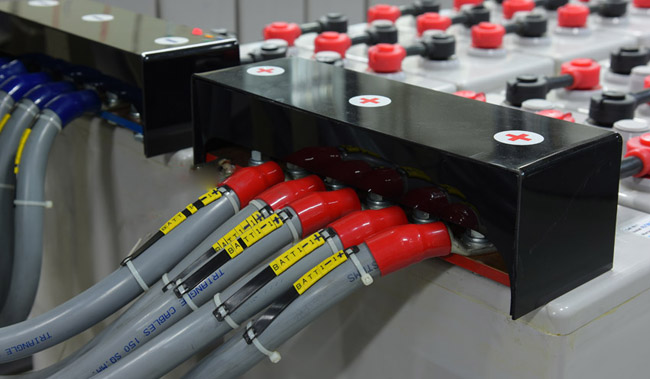The battery is a key component in powering our new generation of automobiles. It is an essential to start fuel powered vehicles, heavy equipment, fleet trucks, boats, and generators. Batteries are used as a power source in RVs, campers, motor homes, golf carts and other off grid applications and used to store energy from solar and wind turbines. One thing common to all this equipment is the need for battery cables. They make the connection from the battery to other components, and they must be reliable. Technical Cable Applications manufactures high quality battery cable assemblies for all these applications.
There are some key characteristics that need to be considered when producing battery cable assemblies.
Wire Gauge
Battery cable is available in a wide choice of wire gauges to satisfy power requirements. The larger the cable – the more power it can handle. The amount of allowable power or amperage that can be put through a cable is dependent on the application, location, and ambient temperature the cable will be exposed to. For automotive applications the SAE standard applies and for use homes and business refer to the NEC standard and local codes. Technical Cable Applications manufactures Battery Cable Assemblies up to 4/0 AWG.
Stranding
The stranding of the wire has a huge impact on the flexibility of battery cable assemblies. For most automotive applications the flexibility of the cable is not as important because the cable will usually be in a fixed position connecting the battery to the starter or alternator, so a lower strand count is often acceptable. There are applications where the cables need to be flexible because the connected devices need to be moved frequently or when the cable is exposed to constant bending. Then a higher strand count is needed for increased flexibility.
Since current tends to flow on the outside of wire a higher strand count has slightly better conductivity because there is more wire surface. This can be very important in some applications.
Insulation
Battery cable assemblies in automotive applications often needs to withstand higher temperatures and resist exposure to the oil and chemicals found under the hood. SAE type SGT and SGX battery cable is meant for use in automotive and vehicular applications. SGT cable, insulated with PVC, is rated for use up to 105°C. SGX cable, insulated with cross-linked insulation, is a bit more abrasion resistant and withstands higher temperatures up to 125°C. For some applications, including solar, NEC and UL rated wire is often required and the type needed depends on whether the cable will be used in an indoor environment or in conditions where the cable will be exposed to moisture, heat, or sunlight.
Connectors
There are numerous connector types used for battery connections with the most common being the standard battery terminal that goes over a lead post and the ring lug terminal. They come in straight and right-angle configurations to fit various wire gauges. They are typically made of copper and come in plated and bare copper variations.
Reliability – Quality Battery Cable Assemblies
Technical Cable Applications is an ISO9001:2015 registered manufacturer of cable assemblies. The company is certified to provide UL and CUL traceability when requested. Highly skilled employees assure that the components are assembled correctly. Contact our Technical Cable Applications sales team for application assistance for all your cable assembly needs.
